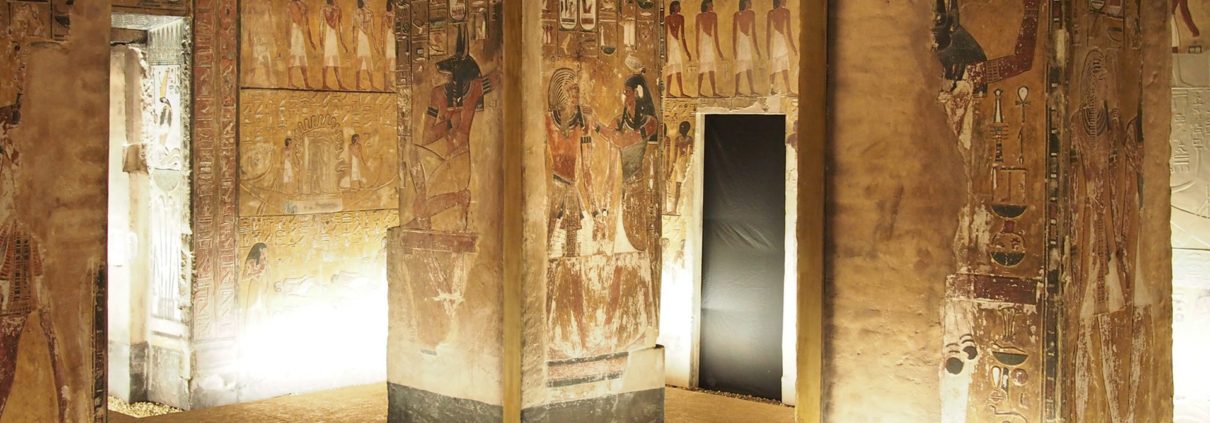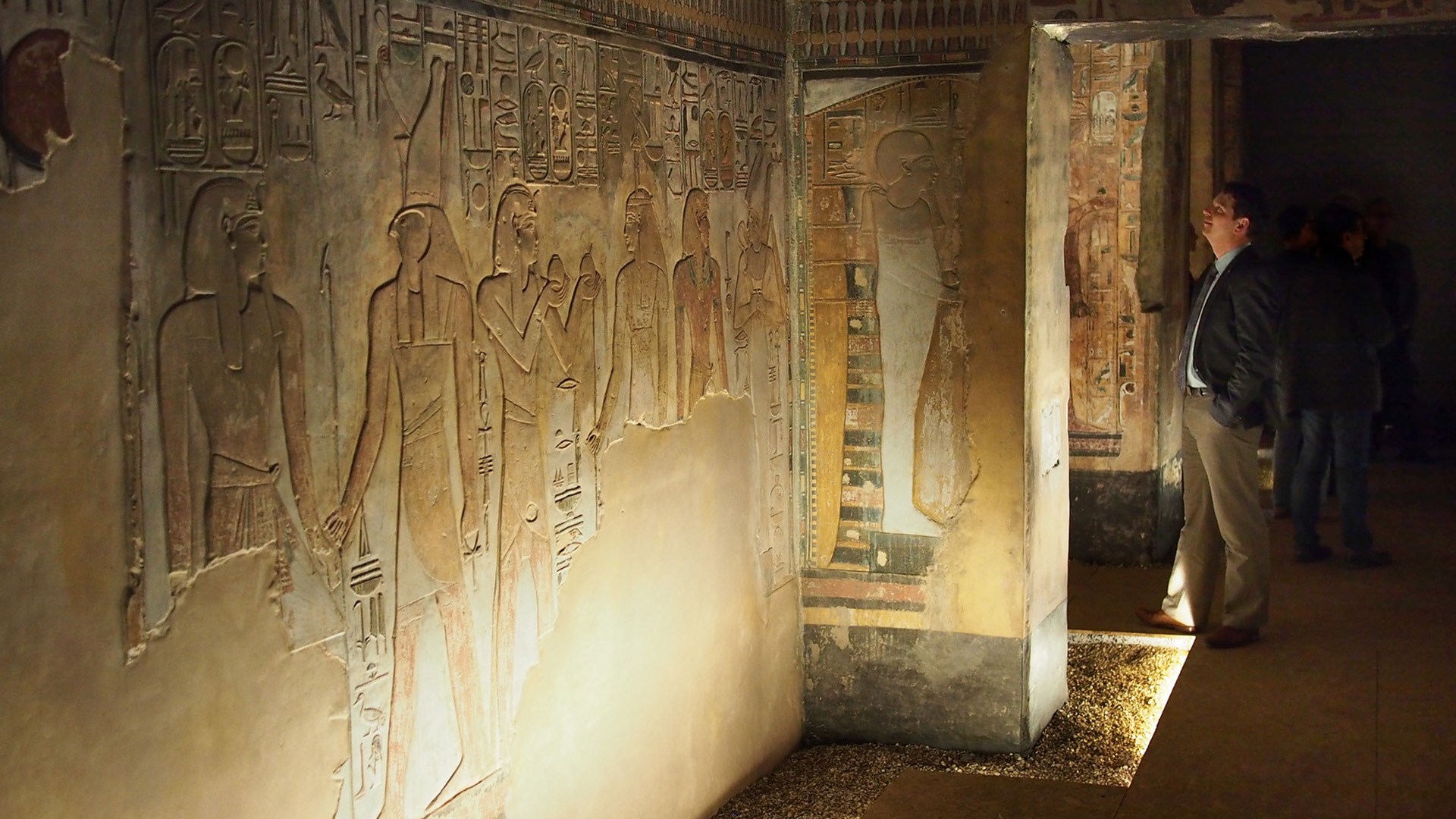It is a giant leap from historical times in ancient Egypt to the 21st century. Océ – A Canon Company, is bridging the two eras by recreating parts of the tomb of Seti I. Seti I was a pharaoh in the nineteenth Dynasty. Océ elevated printing technology was used to create exact reconstructions of the tomb’s high relief walls, pillars and sarcophagus.
Océ worked closely with the Factum Foundation for Digital Technology in Conservation. Together, they printed large molds to create the reconstructions and adapted Océ’s elevated printing technology to print reliefs up to 15 mm high. Another partner, Factum Arte, used the Océ prints to create the final panels and sarcophagus for the exhibition in the AntikenMuseum in Basel, Switzerland.
The high accuracy level offered by Océ’s elevated printing technology faithfully produced the surface of the painted walls from the tomb of Seti I. The technology transforms images in high-resolution 3D digital files into physical objects. It prints scanned data on a scale and at a resolution that exceeds any other currently existing elevated printing technology.
“It is great work,” says Enrique Esteban, team leader of Factum Arte. “This exhibition and Océ have been fundamental to making it all possible.”
Reconstruction of our cultural heritage is just one of the many applications made possible by Océ elevated printing technology. It is also applied to reproduce paintings of Dutch Masters, such as Rembrandt, Van Gogh and Vermeer, to produce elevated maps and braille signage for the visually impaired, to produce elevated artwork and interior decorations for the home and office, and to create branded marketing items, such as printed emblems for football teams and sport clubs.
Elevated printing is just one example of how Océ is printing the world in whole new ways.

